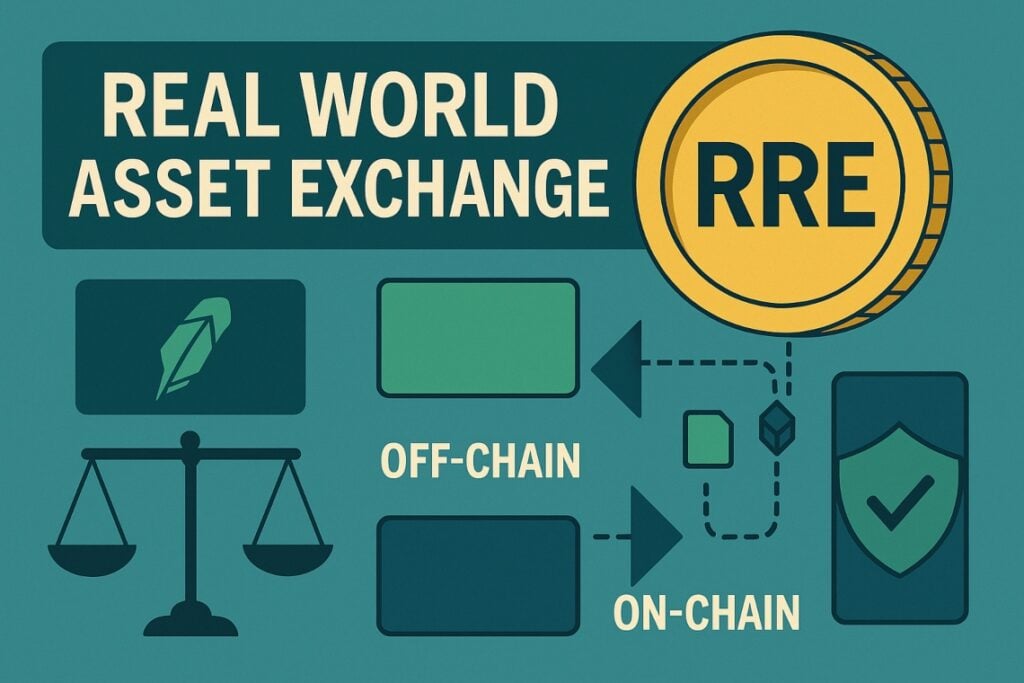Robinhood has submitted a groundbreaking proposal to the SEC in the United States to establish a federal framework dedicated to the issuance and trading of tokenized RWAs.
This theme, increasingly central in finance, promises decisive transformations both in the structure of the markets and in the experience of investors. We analyze the key points of the proposal and its possible impact on the USA financial system.
The Robinhood Proposal: A Unified Framework for Tokenized RWAs
The tokenization of real-world assets (RWAs) is emerging as one of the most important innovations of recent years.
The keyword tokenized RWAs reflects the trend, already estimated to grow exponentially: according to forecasts, the market could reach 30 trillion dollars by 2030.
Factors such as institutional demand, the desire for greater transparency, speed in processes, and the possibility of expanded access push in this direction.
But what are tokenized RWAs? They are digital representations of traditional assets – stocks, bonds, funds, real estate – recorded on blockchain and made tradable in an online, secure, and always accessible environment.
This allows for faster and more transparent settlements, eliminating classic gaps such as poor traceability or time limits.
In the United States, the current landscape is fragmented: each state has its own rules, and at the federal level, there is a lack of a clear regulatory framework for these new instruments.
Robinhood has therefore filed a 42-page proposal with the SEC, which aims to revolutionize the approach. Instead of innovating first with technology, Robinhood places legal clarity at the center.
The goal of the Robinhood plan is simple yet ambitious: to overcome the multiplicity of state regulations with a unique federal structure.
This framework would make the tokens representing the assets (such as stocks or bonds) legally equivalent to the underlying asset.
In practice, owning the token would be equivalent to directly owning the asset, without interpreting it as a derivative or synthetic product.
As a result, intermediaries – including Robinhood itself – could hold and trade tokenized assets by adopting the rules already in use for traditional instruments.
This eliminates regulatory duplicates and resolves ambiguities regarding the ownership of instruments, initiating a clear and uniform regolamentazione.
Real World Asset Exchange: funzionamento e benefici

The heart of the innovation proposed by Robinhood is called Real World Asset Exchange (RRE). This system combines the best of both worlds: speed of operations and blockchain traceability.
The procedure involves that the matching between orders occurs off-chain, therefore outside the blockchain, to ensure speed and scalability. The settlement of transactions, however, is on-chain – this offers maximum transparency and auditability.
In addition to efficiency and transparency, the proposal places great emphasis on compliance issues.
Through partnerships with Jumio and Chainalysis, the system already integrates robust identity verification and anti-money laundering (KYC/AML) tools, complying with both U.S. and international regulatory requirements.
This aspect is crucial, especially considering the opening to a global audience of investors.
The real leap in quality of Robinhood’s proposal for tokenized RWAs does not concern solely the technological dimension, but above all the legal one.
Building a solid federal regulatory model represents the key to allowing traditional players – banks, funds, financial institutions – to enter this market in a disciplined manner.
If the proposal were accepted by the SEC, a replicable model could emerge, paving the way for wider adoption of tokenization on a large scale.
The objective is therefore to create a mechanism that other players can use, strengthening the legitimacy of the sector and decreasing regulatory risks.
This move marks an evolution for Robinhood itself. From a simple platform aimed at private investors, the company now positions itself as a true bridge between traditional and digital finance.
The RRE system promises 24/7 accessibility to a vast array of assets, ranging from funds and bonds to physical goods and real estate properties. This change also implies a new revenue model.
Focusing on trading, custody, and compliance services for tokenized RWAs, Robinhood aims to reduce reliance on traditional spread commissions, transforming into a true market infrastructure.
Regulatory challenges: risks and obstacles
However, the path does not promise to be free of obstacles. The SEC and other entities might adopt a cautious if not outright hostile approach, given the risks related to tassazione, tutela degli investitori e questioni internazionali.
The initial regulatory fragmentation and the lack of consensus at the national legislative level further complicate the implementation of the proposal.
Despite everything, Robinhood’s initiative represents the first real attempt by a significant brokerage company to bring tokenized RWAs into a regulated and compliant sphere.
If accepted, this proposal could set the standards for “compliant tokenization” for the US financial system as a whole.
The act of presenting such a detailed proposal to the SEC, even if not yet adopted, pushes the sector towards a structured and design-oriented reflection on the infrastructure of tokenized RWAs.
Robinhood thus paves the way for innovation and regulatory discipline to coexist for the first time in a clear, transparent, and replicable federal context.
This initiative could become the point of reference for the entire U.S. market and beyond, encouraging new solutions, greater security for investors, and a profound modernization of the traditional financial architecture.
Ultimately, the Robinhood proposal redefines the role of tokenization in modern finance and invites all operators – regulators included – to build the future of the markets together, promoting a transformation based on security, clarity, and accessibility.
Source: https://en.cryptonomist.ch/2025/05/20/robinhood-and-the-tokenization-of-rwas-how-it-will-change-the-us-financial-markets/